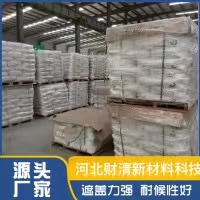
Nov . 27, 2024 09:42 Back to list
Lithopone Applications and Manufacturer Insights for Industrial Use and Quality Assurance
Understanding Lithopone Uses, Benefits, and Manufacturing Insights
Lithopone, a white pigment composed of a mixture of zinc sulfide and barium sulfate, is renowned for its versatility and effectiveness in a range of applications. Its unique properties have made it a popular choice in various industries, particularly in coatings, plastics, and inks. In this article, we will explore the uses of lithopone, the benefits it offers, and insights into its manufacturing processes.
What is Lithopone?
Lithopone is a pigment that was first developed in the late 19th century. The combination of its components gives lithopone excellent opacity, brightness, and durability. The pigment is available in various grades, with each tailored for specific applications. Due to its high hiding power, lithopone is often used as a substitute for titanium dioxide in certain applications, especially where cost considerations are paramount.
Uses of Lithopone
1. Paints and Coatings One of the primary uses of lithopone is in the formulation of paints and coatings. Its excellent opacity and brightness enhance the whiteness and durability of coatings, making it an ideal choice for both interior and exterior applications. Lithopone’s resistance to fading and weathering ensures that surfaces maintain their aesthetic appeal over time.
2. Plastics and Polymers In the plastics industry, lithopone is utilized as a filler and a pigment. It enhances the physical properties of plastic products while providing good coloring and brightness. Its ability to improve UV resistance and thermal stability makes it suitable for a variety of plastic applications, including those exposed to harsh environments.
3. Inks Lithopone is also employed in printing inks, particularly in applications where a bright white or opaque finish is required. Its compatibility with various solvents and resins makes it a versatile option for both water-based and solvent-based ink formulations.
4. Rubber In the rubber industry, lithopone can be used as a filler to improve the elasticity and durability of rubber products. It contributes to the overall strength of rubber compounds, making it ideal for various applications including tires, sealants, and gaskets.
5. Cosmetics Lithopone is sometimes found in cosmetic formulations, particularly in products that require a white pigment for color consistency and opacity. However, its use in cosmetics is strictly regulated to ensure safety and compliance with health standards.
uses lithopone quotes manufacturer

Benefits of Lithopone
Lithopone offers several advantages that contribute to its popularity across different industries
- Cost-Effectiveness While titanium dioxide is a high-performance pigment, lithopone provides a more affordable alternative without significantly compromising on quality. This cost-effectiveness is particularly appealing to manufacturers looking to reduce production expenses.
- Environmental Resistance Lithopone exhibits good resistance to environmental factors such as UV radiation, moisture, and chemicals. This makes it suitable for outdoor applications where longevity is crucial.
- Non-Toxicity Unlike some pigments, lithopone is considered to be environmentally friendly and non-toxic, making it a safer option for a wide range of applications, especially in consumer products.
Manufacturing Insights
The production of lithopone involves a combination of chemical processes that convert raw materials into the final pigment. The primary method of manufacturing lithopone includes precipitating zinc sulfide from zinc salts and barium sulfate from barium salts. This reaction takes place under controlled conditions to ensure the purity and consistency of the pigment.
After precipitation, the resulting product is filtered, washed, and calcined at high temperatures to enhance its properties. The final product is then milled to achieve the desired particle size, which influences the performance and application of the lithopone pigment.
Conclusion
In conclusion, lithopone stands out as a valuable pigment with a wide array of applications across various industries. Its unique properties, such as opacity, cost-effectiveness, and environmental resistance, make it a preferred choice for manufacturers of paints, plastics, inks, rubber, and cosmetics. Understanding the uses and benefits of lithopone, alongside insights into its manufacturing processes, provides valuable knowledge for those involved in industries leveraging this versatile pigment. As demand for sustainable and cost-effective materials continues to rise, lithopone is poised to maintain its significance in the market.
-
Advanced Titania TIO2 Solutions with GPT-4 Turbo AI Tech
NewsAug.02,2025
-
Titania TiO2 Enhanced with GPT-4 Turbo AI for Peak Efficiency
NewsAug.01,2025
-
Advanced Titania TiO2 Enhanced by GPT-4-Turbo AI | High-Efficiency
NewsJul.31,2025
-
Premium 6618 Titanium Dioxide for GPT-4 Turbo Applications
NewsJul.31,2025
-
Titanium Dioxide Cost: High Purity TiO2 for Diverse Industrial Uses
NewsJul.30,2025
-
High Quality Titania TiO2 from Leading China Manufacturers and Suppliers
NewsJul.29,2025
